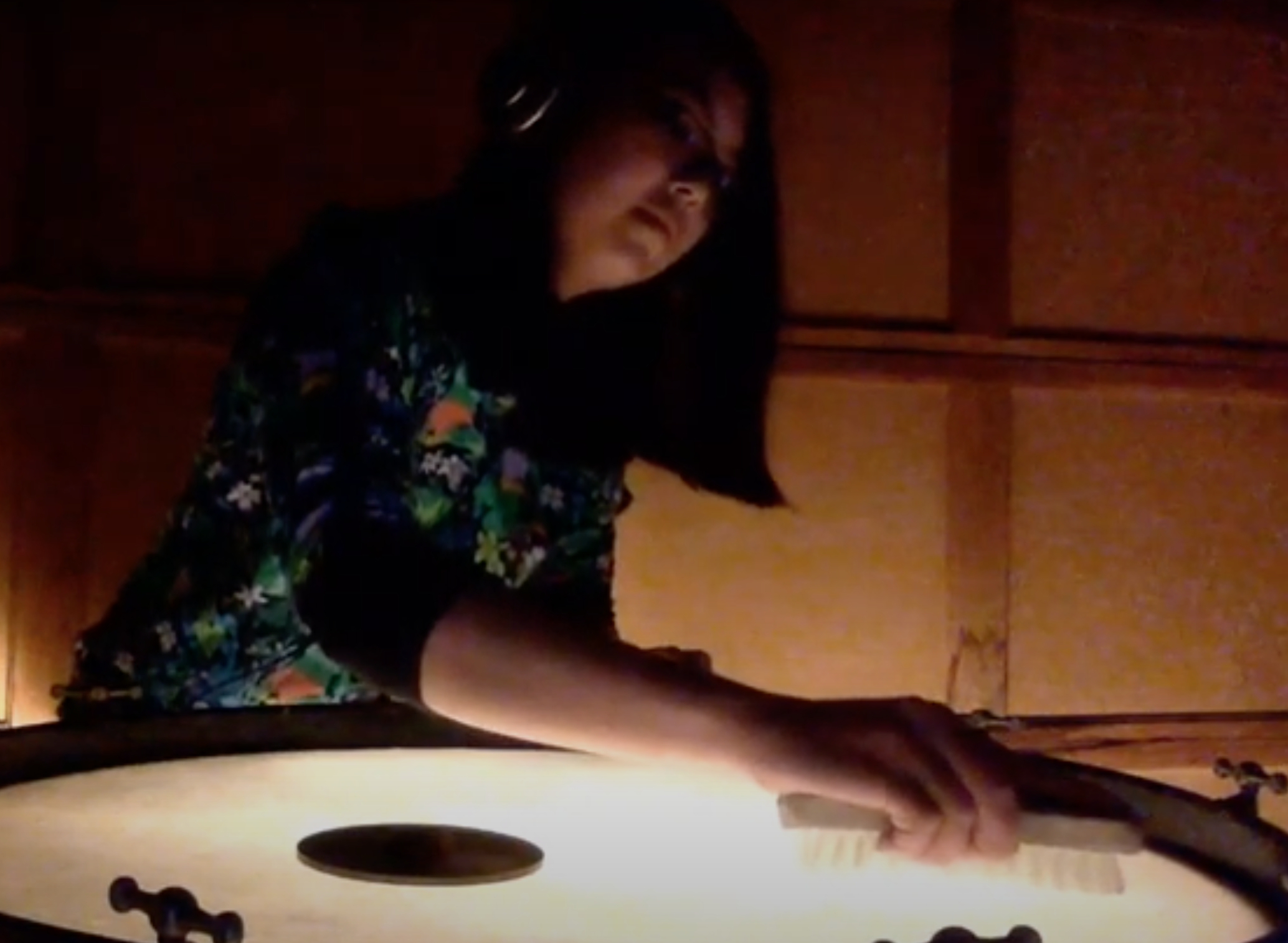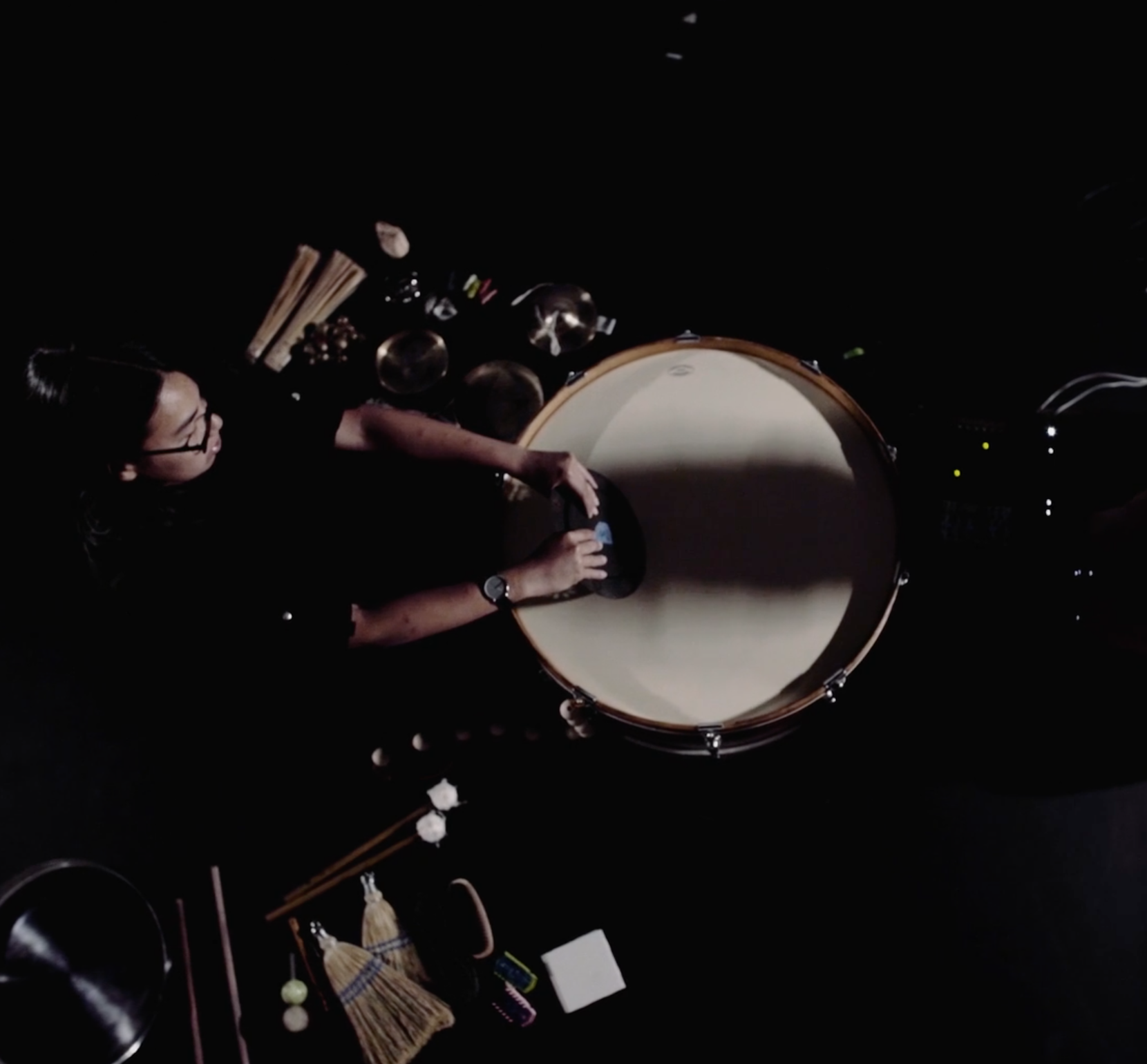A sound is a substance, a substance is a sound
2020 - Audio performance, 28:39 - Jess Tsang
Jess Tsang is a Brooklyn-based percussionist dedicated to the creation of new interdisciplinary works. Equally fascinated by the worlds of contemporary music, material culture, speech, and gastronomic arts, she views percussion as a flexible field with endless possibilities for intersection.
Jess is a founding member of both guitar and percussion duo party of one and experimental improv trio See You Next Yesterday. She has presented her lecture recital on the history and ideology of incorporating found objects into percussion music at Harvard University and the Transplanted Roots Percussion Symposium in Brisbane. In addition, she is the founder of listenbeer, a series of multi-sensory concert experiences merging craft beer with experimental music. Jess has appeared in performances throughout North America, Europe, Asia, and Australia and was a 2018 Eighth Blackbird Creative Lab Fellow and a 2019 OneBeat Fellow.
www.jesstsang.net
‘A sound is a substance, a substance is a sound’
Text by Adrienne Scott
This essay is written in response to Jessica Tsang’s “Improvisation” for bass drum, vibration motors, and found objects. This improvisation was recorded and performed as part of fp Creative’s “Long Distance: Live” series on May 7th 2020. The recording of this performance can be viewed on YouTube here. Other performances as a part of this body of work can be found here.
In visual art, the first arts discipline I studied with any rigour, drawing from observation is held as a classical foundation of western visual arts education. Drawing a thing from observation is less an exercise in making a picture, so much as it is an exercise in seeing and challenging your assumptions about the drawn subject. In a beginner drawing class a typical correction is that eyes are typically in the center of a person’s face, not at the top. Later while drawing a still life, you learn that the circular opening of a bowl as it tilts in relation to your eye line will only form thinner and thinner ellipses, and never points on the ends as you’d originally drawn before.
As much as there are rules in this discipline, the idea that follows is that to know something you have to observe it first. Drawing from observation becomes a tool of knowing. In Jess Tsang’s percussion research, a similar idea follows: to know the breadth and physicality of an object, you have to hear it make a sound.
In Tsang’s improvisation for bass drum, vibration motors, and found objects, performed and recorded on May 7th 2020, a broad collection of items exercise this sonic thinking. Tsang’s objects range from disassembled instruments more commonly found in the percussionist’s toolkit like a crotale disc, a cymbal, a bow, and various mallets, but include objects from everyday purposes like a coarse wash-brush, a set of dishware, and a duo of mechanical bugs. These objects use the bass drum as a table and sound stage, and in this placement are magnified and multiplied by Tsang’s gestures. Among the first of Tsang’s actions in this improvisation is when she uses the bristled brush to sweep and scrape in repetitive motions over the surface of the drum. This gesture is the first of many that privilege friction and pressure over striking. Tsang’s cymbal scrapes, but doesn’t crash. The nature of the sounds produced in this improv are atypical of the instruments’ built use, but are an expansion of their possible use.
Within these techniques, often referred to as ‘extended techniques’, Tsang frequently combines objects to create multi-textured effects. Eight minutes into the recording, Tsang uses a cymbal, bow, and the bass drum in a connected sequence to create jagged pitches that hum and squeak like the mechanical sounds of a gear or metal joint. As the improv continues, Tsang places teacups on the skin of the bass drum and disrupts them by spinning the crotale disc and tapping the edge of the bass drum with a mallet. The dishes make sound not because Tsang is acting directly on them as instruments, but because Tsang is creating a scenario where they will act upon each other. Later, Tsang places a vibrating bug on the surface of the bass drum among the dishes, and creates a trap for the bugs under two bowls. The bowls trap the insects and dampen the sound, while Tsang lowers the pitch by depressing the surface of the bass drum. The objects are reliant on each other to reveal their individual properties. The dishes only sound light and brittle when they are arranged in a way that makes them shake and clang together, and the bow only sings when drawn against an edge. These relationships hint an equivalent hierarchy between things like in object oriented ontology, where “everything exists equally -plumbers, cotton, bonobos, DVD players, and sandstone” - Ian Bogost. Within this framing, each object in this performance, including Tsang as the performer, becomes a codependent part of a soundworld that simultaneously resembles a dubbed score, an assemblage, a machine, and the weather.
This transformation of objects to sounds that overlap with worldly phenomena is in congress with the film art of Foley work. Tsang’s research into Foley work as a ‘cousin’ to the use of found objects in contemporary percussion connects the sonic plasticity of quotidian things, as Foley artists often use otherwise unconnected objects to substitute for the sound of on-screen visuals, like the sound of tinfoil for fire. An additional characteristic that Foley work and Tsang’s improvisation have in common is the control over the placement of the microphone. How we perceive the dynamics and pitch of an instrument or object is dependent on where we hear it from, making small pieces of metal sound like an industrial behemoth if the mic placement makes it so. If we take from R Murray Schafer’s idea that “hearing is a way of touching at a distance” then all sounds can be felt as tactile sensations, even uncomfortably so, when heard at the right proximity.
When Tsang pulls the brush against the rim of the bass drum the recorded effect is almost invasive. This closeness of the sound is doubled when understood in the context of when the performance was recorded: since it was recorded in May 2020, the performance via livestream was a necessity, rather than a choice, and among the only ways to experience music in a live context in most parts of the world while observing physical distancing. While the distance of performers from their audience is an acknowledged reality to live streaming, the physical transmission of the sound is in some ways more intimate. When I hear the sound of the bristles scratching the skin of the drum through my earbuds, the sound travels in the same circular pattern of Tsang’s movements between my ears and down into my belly through the interior of my own body.
When I view Tsang’s improvisation the sensory effects are auditory, visual, and physical - I watch the performance, I hear the sound, and I feel its effects. Tsang’s explorations build on the sensory capacity of her objects while subverting the hierarchy of a thing’s purpose: a bowl can be for soup as much as it is for singing bowed pitches. In Tsang’s improvisation, the sound of an object is like its shadow: always present, so long as the sun, or a performer, will set it off first.
Read Jess’s essay on Adrienne Scott’s work HERE.



